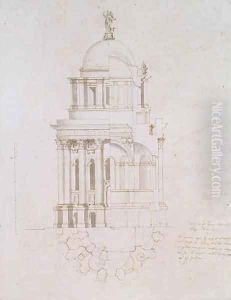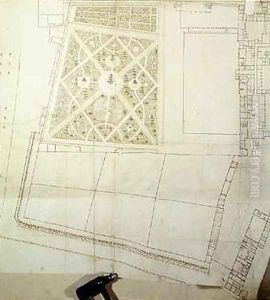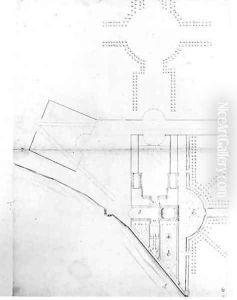Nicholas Hawksmoor Paintings
Nicholas Hawksmoor was a prominent British architect who played a significant role in the development of late 17th and early 18th century English Baroque architecture. Born in 1661, possibly in Nottinghamshire, Hawksmoor's early life is not well-documented, but he rose to prominence through his association with some of the most significant architects of his time, including Sir Christopher Wren and John Vanbrugh. Hawksmoor's career was largely shaped by these associations, through which he gained substantial experience and recognition in the field of architecture.
Hawksmoor worked closely with Sir Christopher Wren, the architect behind the rebuilding of St. Paul's Cathedral after the Great Fire of London in 1666. Under Wren's tutelage, Hawksmoor contributed to the design and construction of several important London churches, such as St. Mary Woolnoth and St. George's, Bloomsbury, which are considered masterpieces of English Baroque architecture. His collaboration with Wren and subsequent work under John Vanbrugh, another leading architect of the time, allowed Hawksmoor to develop a distinctive architectural style that blended robustness and classical grandeur with imaginative and sometimes idiosyncratic details.
Beyond his work with Wren and Vanbrugh, Hawksmoor was responsible for designing several other significant buildings and architectural projects. Among his most notable independent works are the six London churches commissioned under the Fifty New Churches Act of 1711, which include Christ Church, Spitalfields, and St. Anne's, Limehouse. These churches are celebrated for their striking and innovative designs, showcasing Hawksmoor's skill in manipulating architectural forms and space. He also played a key role in the planning and development of the new quadrangles at Oxford University, including the Clarendon Building and the Codrington Library at All Souls College, further cementing his legacy as a master architect.
Nicholas Hawksmoor's contributions to architecture extended beyond his individual projects. His distinctive approach to design, which combined classical elements with Baroque exuberance, had a lasting influence on English architecture and can still be seen in the works of later architects. Hawksmoor died in 1736, leaving behind a legacy that has been celebrated for its creativity, innovation, and enduring impact on the architectural landscape of Britain. Despite being less well-known than some of his contemporaries, Hawksmoor's work continues to be studied and admired for its originality and architectural significance.


